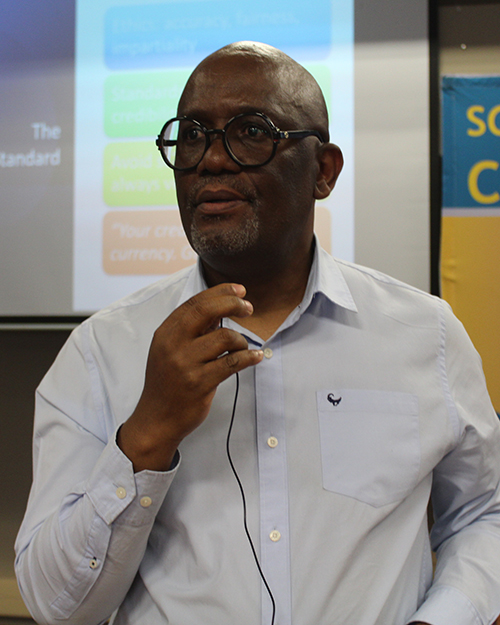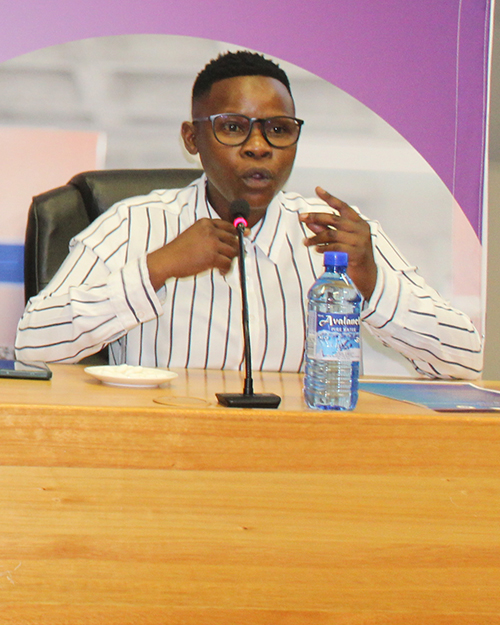By Gofaone Motsamai
Textbook learning can only take one so far in the world of broadcasting. What counts is real experience behind the microphone. Students at the North-West University’s (NWU’s) Mahikeng Campus were all ears when two radio and television journalists visited the campus to share what it takes to succeed in the field.
On 5 September 2025, Benny Motaung, broadcaster and producer at Motsweding FM, and SABC journalist Sentleeng Lehihi, gave a talk to Communication students on “The script, the story and the standard: lessons in broadcast journalism”.
Benny explained the rhythm of radio work and described the three phases of every broadcast. “Before broadcasting, there’s a meeting we call pre-production. This is a meeting between a presenter, a producer and sometimes a technical person. They will be talking about the script, things like traffic, adverts, news and all those elements that make a complete programme.”
He said teamwork is tested in these meetings as the presenter and producer may differ on how to run the programme.
Then comes the show itself and dealing with the unexpected, be it a breaking news story or a technical hitch.
Benny also spoke about the importance of post-production reflection: “We sit down and discuss what happened during the show. The producer might say, ‘I was talking to you, but you were not listening.’ Another might say, ‘You were supposed to play an advert, but you didn’t.’ That’s where feedback is shared for improvement.”
Amplifying community voices
Turning to television and field reporting, the SABC’s Sentleeng reminded students that journalism is not only about reporting facts, but also about carrying community voices.
“What is journalism? Journalism is opportunity. It’s our opportunity to access information, disseminate it and then ensure that we amplify the voices in our communities. We don’t give them voices; we amplify their voices.”
She explained how field reporting requires balancing the urgency of live coverage with the responsibility of representation.
Sentleeng also addressed ethics and the importance of context. “You can’t be talking about a lack of water and then show footage of donkeys, unless the donkey cart is carrying water. You need to understand how to contextualise the story in your lived environment and reflect it as such.”
How to prepare for the workplace
Both speakers encouraged students to use their university years to prepare for the workplace. Benny stressed the need to “learn and learn and learn”, while Sentleeng urged them to adapt across platforms.
“We don’t call ourselves radio or television reporters. We’re just reporters. The world has changed; you can hear my voice in one story and also see me on social media. These platforms are tools, not competitors.”
The session closed with a reminder that journalism requires both skills and commitment. Students were encouraged to pursue internships, volunteer in media spaces and contribute stories in local languages to strengthen community engagement.

Benny Motaung shares insights on radio production, teamwork, and the three phases of every broadcast.

Sentleeng Lehihi highlights the importance of amplifying community voices and ethical field reporting.
